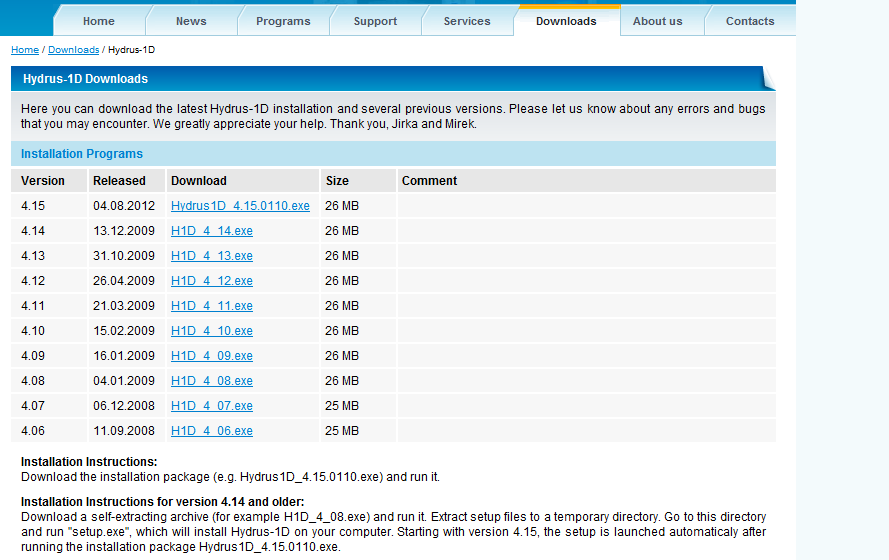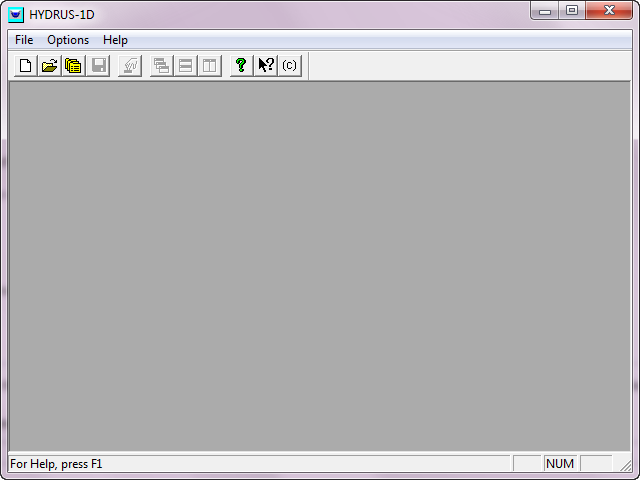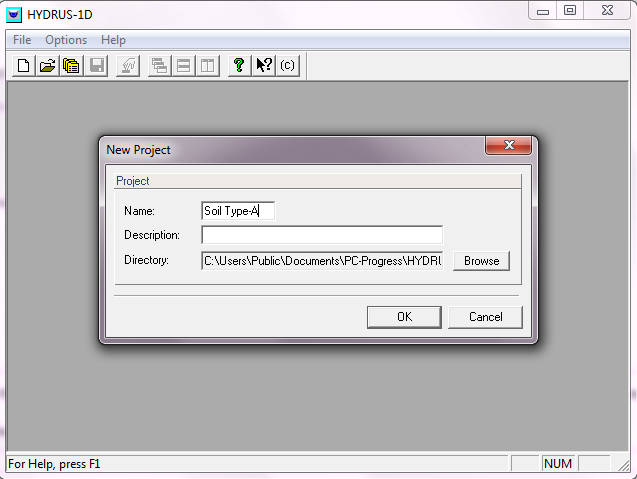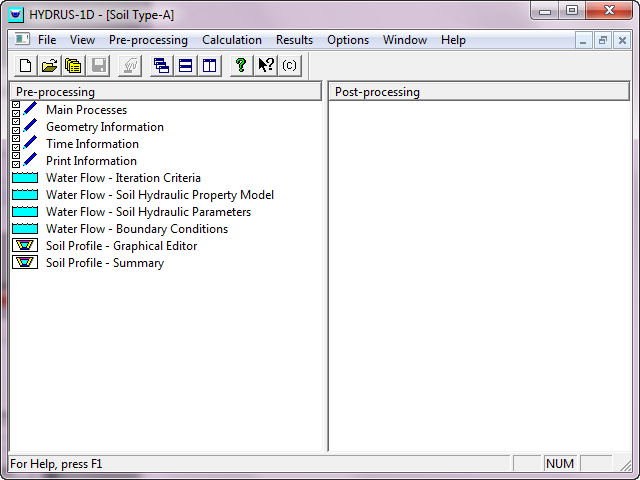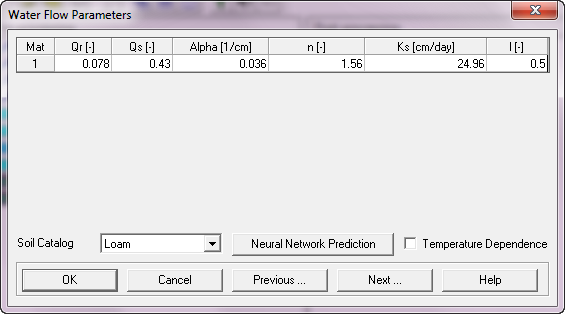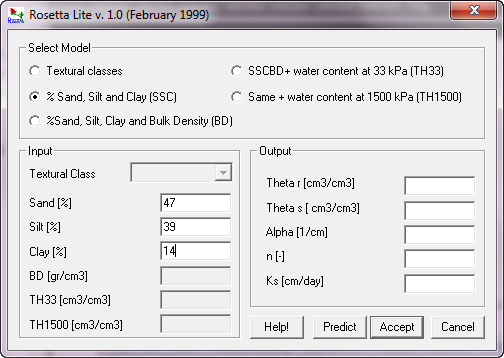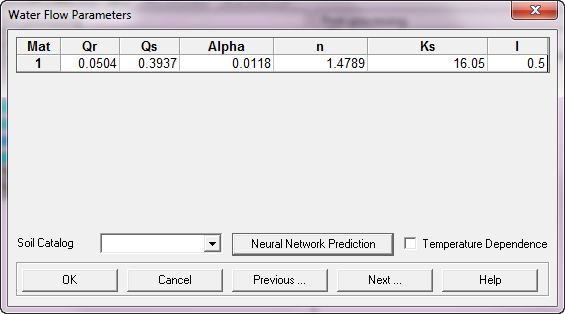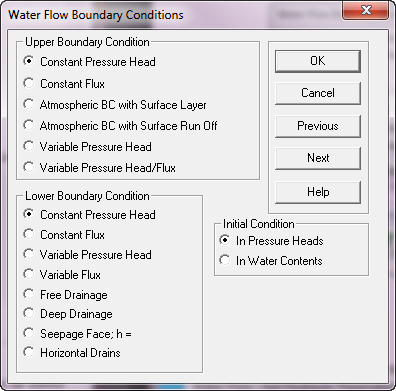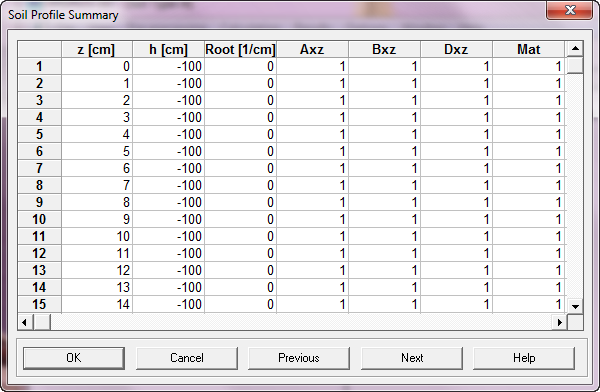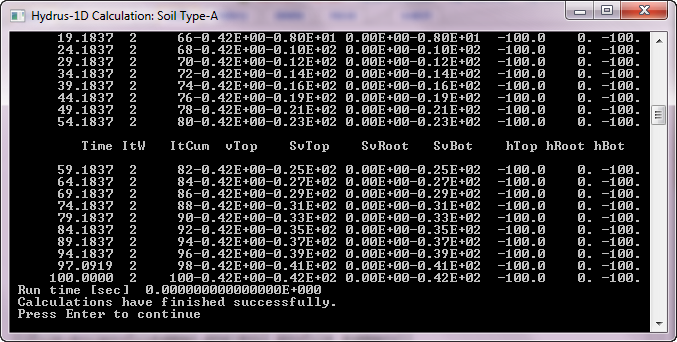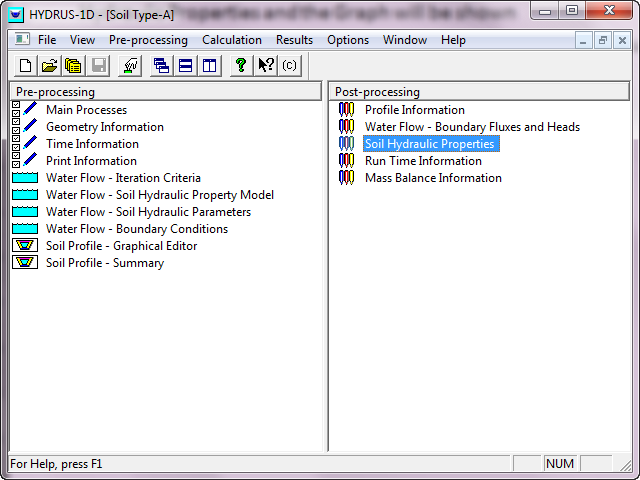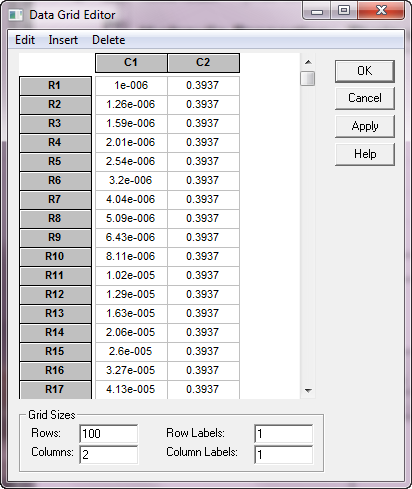Soil parameterization
To develop soil parameterization file, first the depth of the different soil horizons and texture (combination of soil, silt and clay) in percentage is required. This information is general available in soil dataset. The texture information is useful to describe the characteristics of soil water retention curve. The soil texture information (in percentage) is provided as input data to the software component ROsetta inside 'HYDRUS 1D' to understand pedotransfer functions of soils in three different hypothetical pressure scenarios. They are: 0 mbar, 60 mbar and 15,000 mbar. The soil texture is classified according to the specific pore volumes of soil (Scheffer and Schachtschabel 1984). The soil texture information provides additional
For example, a soil type A has following depth and texture combination:
| Horizon | Depth (cm) | Texture (Sand,Silt,Clay %) |
|---|---|---|
| A Horizon | 15 | texture (47, 39, 14 ) |
| B Horizon | 15 | texture (40, 42, 19 ) |
| C Horizon | 25 | texture (33, 40, 27 ) |
| D Horizon | 35 | texture (49, 33, 18 ) |
The texture information needs to be supplied to HYDRUS 1D software to get the water holding capacity of the specific texture combination:
- The HYDRUS 1D can be download from the following link: http://www.pc-progress.com/en/Default.aspx?hydrus-1d
- Click Hydrus-1D Downloads-->
- Download the latest version (In this tutorial, version Hydrus1D_4.15.0110 is downloaded)
- Open the software:
Click File--> New-->>
Give the name for the new project. For example: Soil type-A
Click OK
A new window with new project name will appear:
On pre-processing windows select the “Water Flow – Soil Hydraulic Parameters”
The new window will appear:
On this window, select the “Neural Network Prediction”.
A new window will appear:
Select model of “% Sand, Silt and Clay (SSC)”.
Input the percentage of SSC in the window. In this example, the SSC of A-horizon from the table above is provided.
Click ‘Predict’ and the Output will be resulted.
Click ‘Accept’ and a new window will appear.
Note down the value in the volume Qr which is 'Residual Water Content' equivalent to wilting point. The value represents the water content in 15,000 mbar pressure.
Click ‘Next’ a new windows appear.
In the new window, make sure that the Upper and Lower Boundary Condition is set to ‘Constant Pressure Head’ and Initial Condition is ‘In Pressure Heads’.
Then click Next
Click next and a new window will appear:
Click Next
Soil profile summary table will appear
Click Next
A new window with the following message will appear: 'Do you want to run HYDRUS-1D application?' Click OK
Several outputs will appear in Post-processing window
Press Enter to continue.
Now your data is saved and you will be taken to initial windows.
Double click the Soil Hydraulic Properties and a new graph will appear
Keep the horizontal variable 'pressure head' and verticle 'water content'.
Right click on the graph and click 'Edit Chart Data'.
A new window 'data grid editor' will appear.
The C1 is pressure (mbar) and C2 is water holding capacity (%)
Take a note of the pressure of 0, 59.9 and related water holding capacity. Since, the water content equivalent to 15,000 mbar is not available, the vaule is taken from Qr (Residual Water Content) which has been described earlier. You will get the values 0.39, 0.34 and 0.05 respectively. Multiplying these values by 100 will give relative portion of water content in mm i.e. 39, 35 and 4.
By substracting water content value from 60mbar to 0 mbar (i.e. 39-35 = 4) will give the water available in large pore storage. The soil can hold water available in LPS against the gravity. By substracting water content value from 15000 mbar to 60 mbar (i.e. 35-5 = 29) will provide water available in middle pore storage. This state of water availability is also known in field capacity.
The total volume of MPS and LPS can be derived by multiplying MPS and LPS value with respective soil depth of A horizon. i.e. 15 * 30 = 450 (MPS) and 15 * 4 = 60 (LPS) as shown in Figure below first column of A horizon The example here includes only the A-horizon soil type. By considering all the available horizon as shown in the first place, the following information can be derived.
The information in D (water content in different pressures) are derived from the HYDRO-1S as explained above. The value for column E and F are derived by substracting water content values within different pressure conditions. The value G is derived from multiplying MPS and LPS with depth.
By taking the average of A,B,C,D horizon and divided by 10, the value MPS (332.5) and LPS (54.5) is derived. The reason for dividing by 10 is because in the parameter file, the depth is provided in decimeter (dm) (10 cm = 1 dm).
The following MPS value (332.5) has to be equally divided into each 1 dm zone in the parameter file as shown in Figure below:
For example, in the above table, the value for fc_1 (field capacity(MPS) for first 1 dm is 30 because MPS in A horizon (15 cm) is 30. In the next fc_2 (2 dm), the average is taken from the MPS value of A and B horizon (i.e. 30+31 = 30.5). Similarly, the MPS value for each dm is provided until 22 dm.
